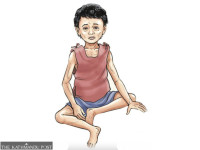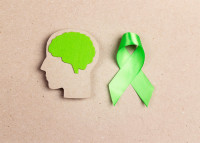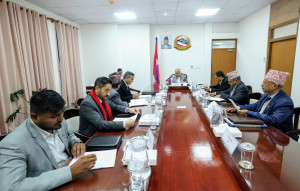Health
Drink only boiled water during monsoon, doctors advise
A recent test found faecal bacteria even in purified jar water. Hospitals in Kathmandu report an uptick in water-borne illnesses.
Post Report
As most sources of drinking water have been contaminated by rainwater, health workers have urged the public to boil water properly before drinking.
They said that even commercially purified jar water is not entirely safe to drink directly, as recent tests found the presence of deadly microbes—faecal coliform and E. coli—in samples tested recently.
“We urge everyone to ensure that water is safe before drinking,” said Deepak KC, chief of the Health Department under the Kathmandu Metropolitan City. “A recent test showed the presence of E. coli and faecal coliform in the samples of jar water supplied to our office.”
Faecal coliform and E. coli are microscopic organisms found in the intestines of warm-blooded animals or their faeces. Bottled water is widely used by households and offices in the Kathmandu Valley and is generally considered safe. However, every year, tests have been showing the presence of dangerous microbes in bottled water, too, which means not all jar water brands are safe to drink without treatment.
Officials at the department said that the test was carried out in the National Public Health Laboratory, the central lab of the health ministry. Following the results, the city office fined the water supplier company Rs200,000.
During the monsoon, health agencies in the Kathmandu valley routinely test drinking water from various sources. These include public taps, jar water, water supplied by the state utility, tanker water, tube well water, water from wells, and water from the Melamchi river, which is a major source of water for the state utility.
“We have also planned to conduct testing of drinking water samples and have made the necessary preparations,” said Basanta Adhikari, chief of the Health Office, Kathmandu. “We are also working to launch water and sanitation programmes in some local units in the district [Kathmandu].”
Doctors say this is not the first time that the water in the Valley has tested positive for harmful microbes. What concerns them more is that water quality has not improved much over the years.
Consumption of contaminated water not only causes diarrheal infections and deadly cholera but also increases the chances of contracting dysentery, typhoid, and hepatitis A and E.
Meanwhile, hospitals in Kathmandu Valley have already reported an uptick in the number of cases of waterborne diseases, including diarrhoea, food poisoning, and typhoid, among others.
“Around 10 to 15 diarrheal patients seek treatment in our hospital every day,” said Dr Yuba Nidhi Basaula, director at the Sukraraj Tropical and Infectious Disease Hospital. Fever, typhoid and food poisoning cases have also risen in recent days. Some patients return home from the hospital emergency after treatment for a few hours, and some need to be hospitalised”
Public health experts expect further rise in the number of diarrheal cases in the coming days, as the monsoon rainfall has just started, during which most water sources get contaminated by rainwater and sewage. What alarms them is most Nepalis do not boil water before drinking.
In Nepal, the monsoon season often brings outbreaks of both water- and vector-borne diseases that infect thousands.
“We are seeing patients infected with waterborne and foodborne diseases in our hospital, but the number is not yet alarming as in previous monsoons,” said Dr Samita Panta Acharya, medical director at the Patan Hospital. “As monsoon rainfall has just started, we expect a surge in the coming days.”
Diarrhoeal disease is a common and seasonal public health concern usually triggered by food and water safety or hygiene issues. It is one of Nepal’s leading causes of illness and death among young children.
Last year, thousands of people in the Kathmandu valley fell ill due to diarrhoea, and dozens were infected with cholera. A study carried out by the health ministry following an outbreak last year showed that nearly 70 percent of drinking water samples in Kathmandu Valley were contaminated with deadly microbes—E. coli and faecal coliform. Even bottled water.
Doctors say initiating awareness drives and ensuring safe drinking water are the only ways to save people from waterborne diseases. They say that a combination of careful surveys, safe drinking water, good sanitation and hygiene standards, social mobilisation and treatment is required to prevent outbreaks.




 8.12°C Kathmandu
8.12°C Kathmandu













